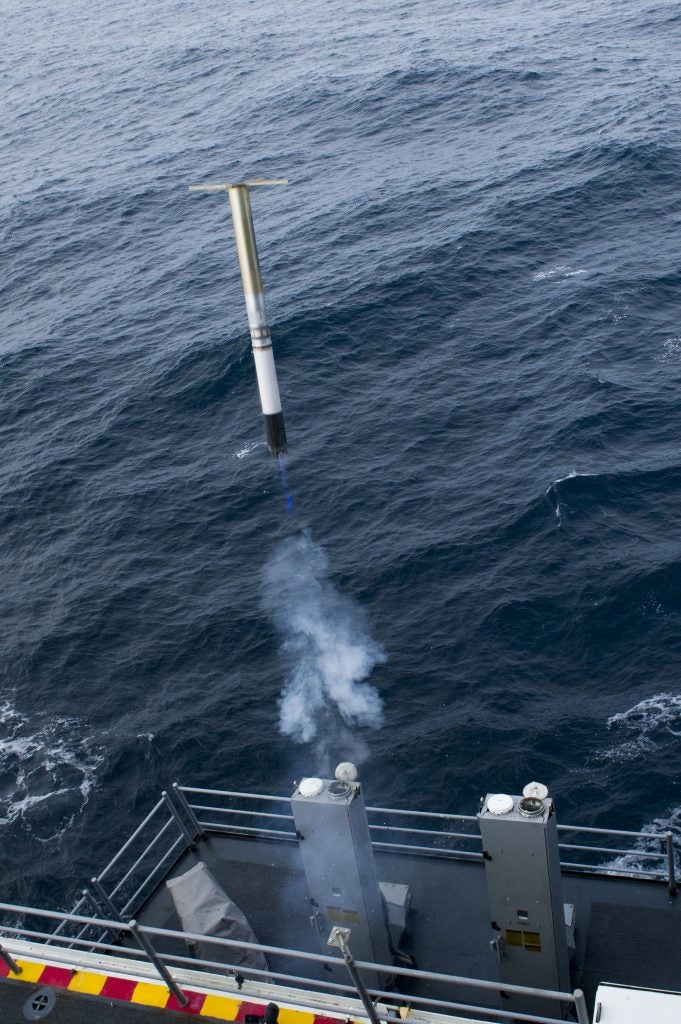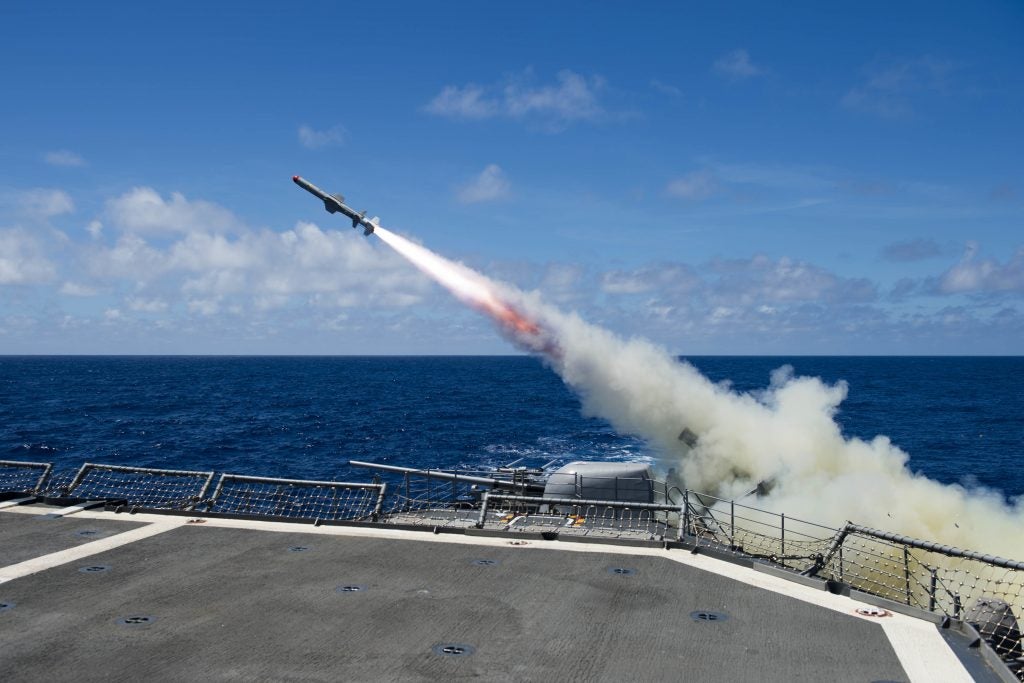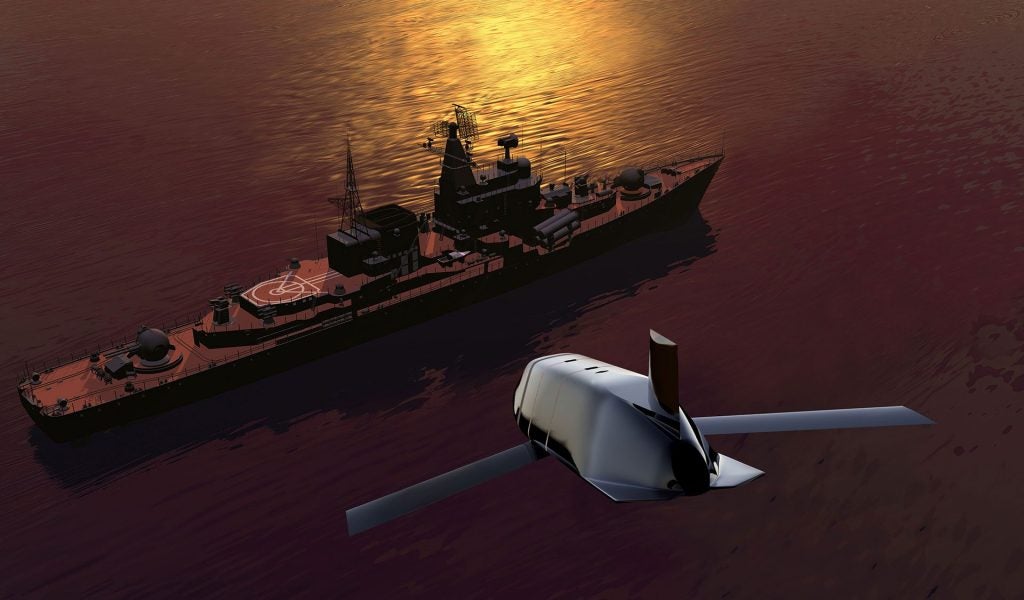The Future Tools of Anti-Ship Warfare – are Anti-Ship Missiles Evolving?
Anti-ship missiles define the modern naval battlespace. Historically there have been two schools of thought in regards to the design of anti-ship missiles (AShMs). Broadly speaking, they have been big and fast, or small and slow. There are, naturally, as many exceptions to this as one might care to find, but it serves to broadly cover the design history of the type in a single sentence. Things are changing, however. In the future, its looking like the options will be big and very fast, or smaller and smart.
Shipborne defenses have advanced several generations since the sinking of effectively defenseless INS Eilat in 1967. The development of AEGIS, tied to the Mk.41 vertical launching system has done a great deal to make a fighting ship and its fleet more survivable in the face of a theoretical mass salvo of AShMs. Add in competent shipboard electronic warfare (EW), such as the modern SLQ-32(V6), and the missiles that drove the initial developments of AEGIS and the New Threat Upgrade don’t look so intimidating anymore. What couldn’t be shot down by SM-2s and ESSMs—not to mention SM-6s—can be jammed, decoyed, or spoofed into missing.

As might be expected however, that paradigm is changing again. Better radar seekers are paired with better computers that do a better job than ever at recognizing real targets amongst the digital fog. Electronic counter counter-measures (ECCM) is ever improving, making jamming harder. Imaging infrared seekers can ignore flares and other IR decoys. It can’t be definitively stated which side has a decisive edge right now, unlike the early 1960s when the first missiles were basically—with a few notable exceptions—unengageable by shipboard defense systems. On the other side of the coin, it could be confidently stated in the early-mid 1990s that AEGIS and shipboard defense reigned supreme, and any such-equipped task force could assume its survival if attacked.
There have been few AShM engagements since the end of the Iran-Iraq war. This, notably, means there is a lack of modern data on how such an engagement would play out today. The most recent such events were off the coast of Yemen in October of 2016. These took place between land-based missile launchers and an unarmed fast transport, then, a week later, an Arleigh Burke class guided missile destroyer. The fast transport, HSV-2 Swift, was targeted and hit by what is believed to have been a Chinese designed, Iranian made, C-801 or C-802 missile. Roughly a week later, the USS Mason shot down what is believed to have been a C-802 missile with three interceptors. The Mason engagement also saw a second inbound C-802 fail and fall into the ocean without being engaged.

The C-801 and C-802 (NATO CSS-N-8 Saccade) are Chinese developments of early export French Exocets. Importantly, they are not particularly modern technology, and, when engaged by modern missile defenses, were relatively easily defeated. However, the undefended Swift was hit and suffered from a severe fire. Naturally, AShMs remain a critical threat to undefended ships, but there are always variables at play. Even the design of a ship can do a great deal to protect it from being hit by older generations of radar guided AShMs
The Israeli corvette, INS Hanit, was struck by a C-802 during the 2006 Lebanon war. At the time of the strike, Hanit did not have any of her radars or other elements of her EW suite active, due in large part to the number of nearby IDF tactical aircraft. Fortunately for the Hanit and her crew, the missile struck a crane near the flight deck, resulting in only four fatalities. Subsequent damage reports showed that while the flight deck was buckled by the blast, and a large aviation-fuel fire could have ensued, the Hanit was incredibly lucky that the missile struck where it did. What may have saved the Hanit, though this has not been proven, was that the ship is a very low observable (LO) design. The crane was likely the most radar reflective object on deck, and so the missile homed in on it.
USS Zumwalt takes this concept to its logical—or depending on who you ask, illogical—extreme. Much is sacrificed to ensure the Zumwalt class’ low observability. For a more conservative example, the San Antonio-class LPDs have a shockingly low Radar Cross-Section (RCS) for their displacement, and the Dutch De Zeven Provinciën frigates are a very good compromise between functionality and LO features. It is unlikely that simply having a LO hull shape will save a ship from inbound missiles, but it can do a great deal to avoid being shot at in the first place.

NATO and its allies have been somewhat hard-up for a competent AShM in recent years. Despite decades of improvements, there’s only so much that can be done with Harpoon to keep it relevant. While hypersonic weapons programs get underway around the world, and China flaunts its unproven anti-ship ballistic missiles, the US is once again doing what it does best; developing a competent, under-publicized, possible world-beater.
The Long Range Anti-Ship Missile (LRASM) is develped from the fuselage of the AGM-158 Joint Air-to-Surface Stand-off Missile (JASSM). LRASM incorporates an imaging infrared seeker, that should allow it to select the most valuable ship out of a task force and prioritize its destruction. With a LO air frame, it should be far harder to engage at range and with point defense weapons, making it more survivable.

In the same pattern, but beating the LRASM to production, is the Norwegian Naval Strike Missile (NSM). Like the bigger missile, NSM packs an imaging infrared seeker, giving it reliable targeting in heavy jamming conditions. Roughly half the size of LRASM, the NSM can fit in the internal bays of the F-35, enabling it to be trucked out to 600nm away from a carrier, then fly its own course another 300 miles, all with a very low chance of detection. Add in aerial refueling, and the carrier air wing, equipped with NSM, can conduct stealthy anti-shipping strikes out well past 1000nm.

LRASM, and the smaller but similar NSM, looks like the way forward in AShM design. Smart and stealthy beat just being fast, as the trend towards LO combat aircraft has shown. The progenitor of stealthy combat aircraft, the F-117, was decidely subsonic. It could barely break Mach .9 running flat out, and would rarely, if ever, do that. And yet, despite cruising at airliner speeds, it entered the airspace over downtown Baghdad on the first night of Desert Storm without issue. The B-2 takes much the same approach. Even the B-1B, which is supersonic capable, lost somewhere around 3-500 knots when it was redesigned from the original B-1A configuration. However, the modern B-1B gained a significantly reduced RCS for the lost speed, making it more survivable in a peer conflict.
Speed has never been the way to beat computers. Even the vaunted SR-71 could have been shot down by the later generation Soviet missiles in terms of pure performance. What the Blackbird could always do, however, was out run the missile crews. The supersonic and hypersonic missiles in service and development pay a steep price for their speed. There is no supersonic AShM that is also stealthy, and the US has been knocking down supersonic missile targets for decades.
This is not to say very fast anti-ship weapons do not have a place. For any instance where the targeted vessel may be surprised, speed works in the favor of the attacker. Anti-ship ballistic missiles are difficult targets to hit, and stocks of ballistic missile interceptors are low worldwide. However, for defended targets, low observability paired with good avionics and seekers appear to be the best way forward for future anti-ship warfare.

The P-500 Bazalt Anti-Ship Missile launchers of the Varyag (011), a Slava-class Cruiser of the Russian Navy. Photo taken at the Manila South Harbor (Author unknown)
Currently, there are a wide variety of threat AShM systems out there. It is essentially useless to grade or rank them, because any failure in defending against even the oldest, poorest quality weapon may be fatal. However, there are systems that are likely considered top tier threats, compared to obsolescent antiques still soldiering on. Of primary concern to the US and allied navies would be anything that can be fired by a submarine, as that will give the defending ship the least possible time to react. In the Asia-Pacific region, these are the SS-N-27 Klub and YJ-18 missiles. Also of concern are the PLA’s YJ-12, and the full suite of classic Russian threats. Most of these threats are supersonic, but speed alone is not what makes them so concerning. All have modern generation seekers that are harder than ever to jam, deceive, or decoy.
The anti-ship game is all about not playing fair, regardless of which side you are on. Smart, stealthy missiles are currently the best iteration of this concept. The Soviets understood this implicitly, and their doctrine reflected multiple types of firing platform for their AShMs. As another era of great power confrontation looms, the US and NATO are finally readressing failings in anti-ship capabilities that became systemic during the Global War on Terror. Hopefully, the theories and doctrines won’t be put to the test in a real conflict, but if they are, I suspect that truly smart AShMs will carry the day for the US.

